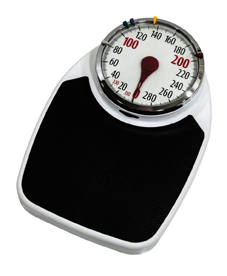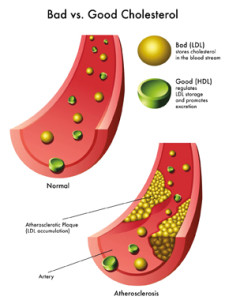Your Health: By The Numbers
Posted on February 2, 2014 by bob in In Every Life
You need to be directly involved in your health promotion and disease prevention efforts. In collaboration with your healthcare provider, you  can use various tests to track your progress to determine trends in your body’s function. Knowing what your test numbers mean, and what questions to ask, is a good beginning.
can use various tests to track your progress to determine trends in your body’s function. Knowing what your test numbers mean, and what questions to ask, is a good beginning.
Height and Weight
These measurements seem routine, but can indicate skeletal changes, fluid loss in intervertebral padding. metabolic or hormonal changes, fluid retention or other situations, any of which may indicate the need for further tests. A basic height-weight comparison to calculate your Body Mass Index (BMI) is an easy method of estimating percent of body fat, which may also indicate a need for further investigation. (See Resource Box: BMI)
The National Heart, Lung, and Blood Institute (NHLBI) recommends considering waist circumference and level of activity to help inform risk for heart disease or diabetes: waist circumference above 35 inches for women or greater than 40 inches for men may indicate an increased risk. A higher than recommended BMI and/or waist circumference, and low physical activity level, must be considered in conjunction with blood pressure, cholesterol, triglycerides, blood glucose(sugar), family history, and smoking to evaluate your risk level. (See Resource Box: Weight/Health Risks).
The NHLBI cautions that BMI elevation can increase risk for hypertension, Type 2 diabetes, coronary heart disease, stroke, gallbladder disease, osteoarthritis, sleep apnea/respiratory problems, as well as endometrial, breast, prostate, and colon cancers. They suggest a 5-10% weight loss may decrease risk.
 Cholesterol/Triglycerides
Cholesterol/Triglycerides
Cholesterol is made by the liver and stored inside fat. Increased triglycerides and LDL cholesterol contribute to atherosclerosis, an accumulation of fatty material along the lining of blood vessels. (See illustration). Blood tests offer a wealth of information. A complete fasting lipid (fat) panel blood test determines triglyceride and cholesterol levels. The lab calculates total cholesterol based on three categories: high density lipoprotein (HDL=desirable); low density lipoprotein (LDL=detrimental); very low density lipoprotein (VLDL) (See Resource Box: Cholesterol Levels, Know Your Numbers)
In Nov. 2013, the American College of Cardiology and the America Heart Association updated the recommendations for treatment based on cholesterol levels. Discuss your numbers with your healthcare provider — BMI, waist circumference, triglyceride, HDL, LDL, VLDL, blood pressure levels — and how the numbers are trending, in order to assess the risks and potential benefits of various treatment plans based on your history and lifestyle.
Triglycerides:
Less than 100 – Optimal
Less than 150 – Normal
150-199 – Borderline High
200-499 – High
Over 500 – Very High
Cholesterol:
HDL: 60+ (may provide some protection against heart disease)
HDL: less than 40 for men, 50 for women (may increase risk of heart disease)
LDL: less than 100 optimal
LDL: 100-129 near optimal
LDL: 130-159 borderline
LDL: 160-189 high
LDL: 190+ very high
If your total (HDL+LDL+20% of triglycerides) is greater than 240, you have two times the risk of coronary heart disease compared to a total of less than 200
We cannot control family history or genetic makeup, but we can be more involved in tracking our numbers, increasing physical activity, maintaining a healthy weight, and adhering to a specific diet or medication if indicated. Knowing how our numbers trend can increase our motivation.
Resources:
BMI: www.cdc.gov (search BMI)
Weight/Health Risks: www.nhlbi.nih.gov/health/public/heart/obesity/lose
Cholesterol Levels: www.heart.org (search Cholesterol)

Arlene H. Morris, EdD, RN, CNE is Professor of Nursing, Auburn Montgomery School of Nursing. Reach her at amorris@aum.edu.









